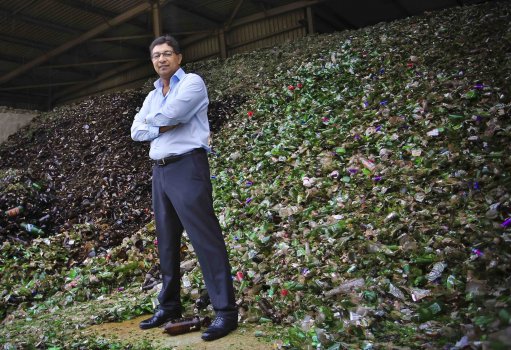
SHABEER JHETAM The glass industry presents a platform for constant potential growth
Extending the focus of glass recycling adds value to consumers, communities, the industry and corporate South Africa, asserts glass recycling organisation The Glass Recycling Company (TGRC).
“Glass is still one of the most preferred packaging forms among brand owners, especially among the more premium brands. This is noticeable in that there has not been a significant decline in the glass industry in the past two years and, as such, TGRC is dedicated to increasing glass recycling in the country,” says TGRC CEO Shabeer Jhetam.
He points out that, in eight years, TGRC has increased the glass recycling rate from 18% to 41%, adding that new glass manufactured in the country has a minimum of 40% recycled content – the highest recyclable content for any packaging material in South Africa.
“South Africa is growing in terms of glass consumption. In terms of market dynamics, the packaging industry is facing a challenging time, but there is nothing untoward in the industry,” he comments.
Advantages and Opportunities
Jhetam reiterates that the organisation’s core objective remains keeping glass packaging sustainable by promoting the practice of recycling and reusing glass, as it is an environment-friendly packaging material that could produce greater benefits.
He explains that South Africa has one of the most sophisticated glass returnable systems in the world and reusing glass packaging reduces carbon emissions significantly. Carbon emissions are reduced by 2.8-million tons yearly as a result of the returnable system.
Through glass recycling – excluding the reduction of carbon emissions from the returnable system – about 220 000 t of carbon emissions were prevented from being emitted last year.
Jhetam further emphasises that bottle-to-bottle loop recycling is also important, owing to all recycled glass being used to produce new glass. Actual environmental benefits are such that an old product can be used to produce a new product which reduces water and air pollution as well.
“Some of the most notable advantages of recycling can be seen in the amount of energy, water and raw materials that are saved. In the past 20 years, South Africa’s carbon footprint has also declined, owing to the lightweighting of glass,” he asserts.
Moreover, he puts forward that recycling is environment friendly and provides opportunities for community and entrepreneurial development.
“We strive to educate, enable, encourage and inspire individuals, as well as uplift impoverished communities by creating income-generating opportunities and skills development in the recycling sector.”
Jhetam comments that TGRC supports buy-back centres that are available for glass collectors to sell and recycle glass materials they have collected in communities, noting that there are currently 50 000 glass collectors who use the centres.
Individuals can recycle glass at TGRC’s glass banks, of which there are more than 4 000 nationwide, he adds.
He points out that the majority of recycled glass in South Africa is collected by predominantly unemployed or lower income individuals.
Jhetam adds that the buy-back centres are, therefore, conveniently located to accommodate lower living standards measurement (LSM) collectors using trolleys or other ways of transporting glass bottles.
The centres create a chain reaction whereby the community and organisation benefit, says Jhetam.
Moreover, he notes there is a gap in the upper LSM in terms of recycling from companies, households and restaurants because recycle banks are not easily allowed to be placed at these facilities and, as a result, little recycling takes place.
“We are preventing eight out of ten bottles from ending up in landfills. As an organisation, that is a milestone for us; however, we continuously seek to improve and better these statistics. We, therefore, see the need for companies and households to increase their involvement to increase the recycling rate.”
Jhetam concludes that TGRC will continue assisting growth by fulfilling social responsibilities incommunities by ensuring, in turn, that the organisation continues to create awareness and inform communities of the benefits of recycling.